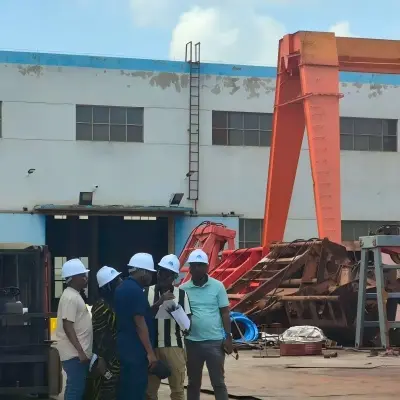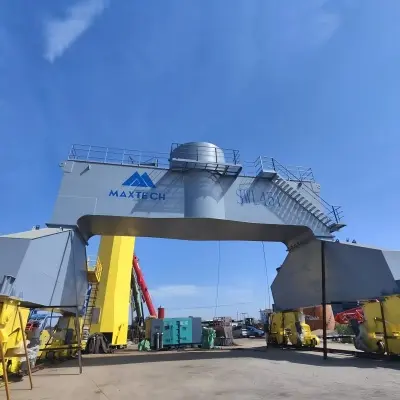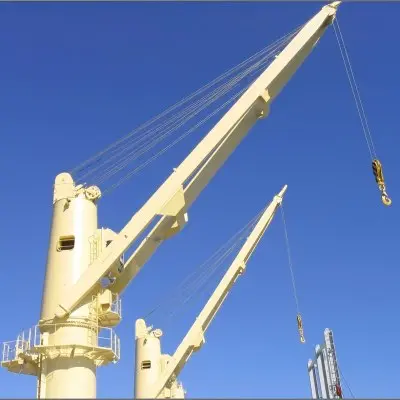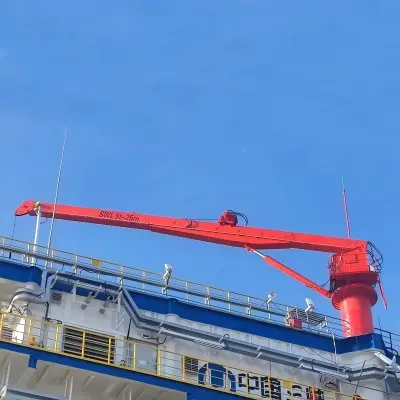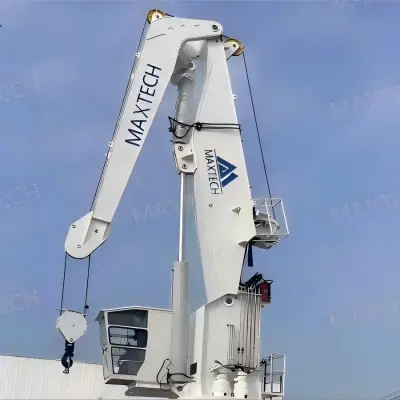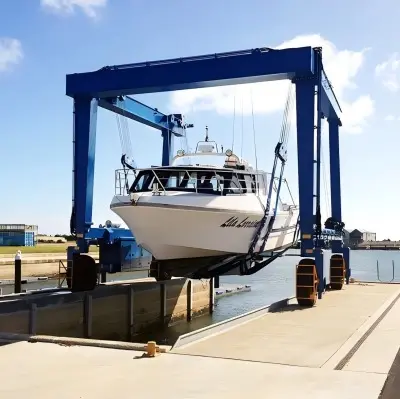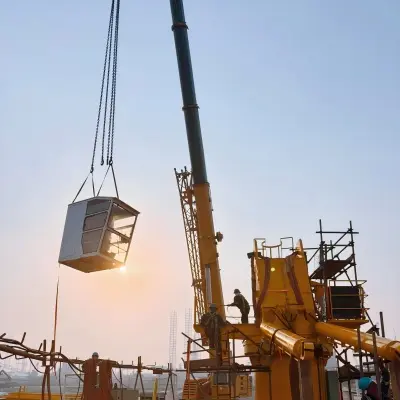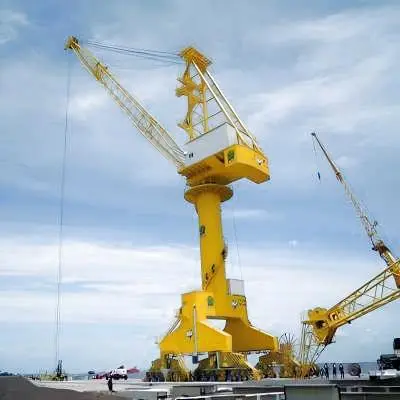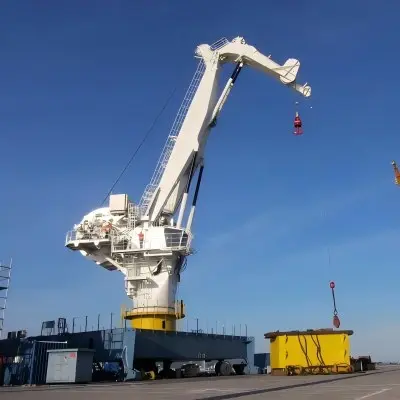News Categories
Featured News
0102030405
Portal Cranes: The All - around Guardians of Port Loading and Unloading
2025-06-27
In global ports, portal cranes stand out as core equipment for their iconic gantry structures and 3D operation capabilities, facilitating efficient cargo handling and powering the intelligent development of ports.
Structure and Principle
Portal Cranes get their name from the door - frame - like metal base. Comprising gantry, jib, rotating, and driving systems, they function in harmony. The gantry system, a connection of two frames by a cross - beam, allows ground vehicles to pass, enabling 3D traffic interaction. The jib system, with a main jib, luffing mechanism, and hook, can perform pitching and telescoping, covering 15 - 50 meters and lifting over 100 tons. The rotating mechanism offers 360° rotation, while the driving system has shifted from diesel engines to "mains power + energy storage" for stability and eco - friendliness. The three key mechanisms work together for smooth cargo transfer in "sea - port - land" spaces.
There is technical parameters of portal cranes MAXTECH:
| Crane model | Lifting moment,tm | Crane outreach,m | Lifting capacity,t | Operating speeds | |||||||||
| Min | Max | capacity | Max | At maximum outreach | At grab mode | Lifting,m/min | Luffing mechanism, m/ min | Slewing mechanism, RM | Traveling mechanism,m/min | ||||
| At maximum cargo | Max | ||||||||||||
| MAX 350 | 350 | 8 | 30 | 16 | 20 | 10 | 8 | 60 | 15 | 20 | |||
| MAX 550 | 550 | 8 | 30 | 17 | 32 | 16 | 20 | 20 | 19 | 1 | 33 | ||
| MAX 650 | 650 | 9 | 40 | 20 | 32 | 16 | 16 | 36 | 62 | 60 | 15 | 20 | |
| MAX 950 | 950 | 9 | 32 | 22 | 43 | 25 | 16 | 27 | 62 | 60 | 15 | 20 | |
| MAX 1280 | 1280 | 9 | 40 | 20 | 63 | 32 | 24 | 27 | 63 | 60 | 15 | 20 | |
| MAX 1400 | 1400 | 9 | 37 | 28 | 50 | 38 | 32 | 27 | 62 | 60 | 15 | 20 | |
| MAX 1720 | 1720 | 10 | 40 | 22 | 80 | 43 | 25 | 27 | 59 | 60 | 15 | 20 | |
| MAX 2000 | 2000 | 10 | 40 | 20 | 100 | 50 | 45 | 27 | 62 | 60 | 15 | 20 | |
Applications and Advantages
Portal cranesare versatile in various scenarios. In bulk cargo handling, they use Grabs and hoppers for 500 - 2000 tons per hour, avoiding traditional quay - crane dead - angles and suiting old or small - medium ports. For container operations, they can lift 20/40 - foot containers with spreaders in multi - purpose ports, occupying less quay front and sharing space with other equipment. In heavy industries like shipyards and steel mills, they handle large components and can be used in bridge building, with high wind - resistance. Their technological edge lies in space efficiency (8 - 15 - meter gantry clearance), fine - motion precision (adjustable speed), and modular design for easy adaptation.
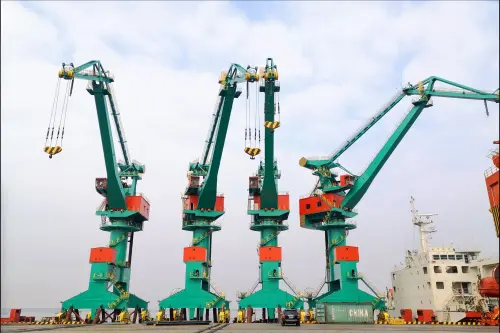
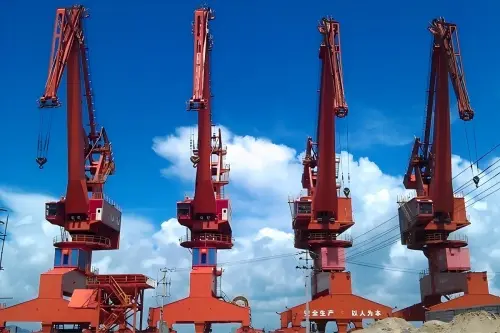
Technological Trends
In the era of port intelligence, portal cranes are evolving. Automation and remote control are achieved through laser radars and visual systems, allowing operators to work from a central control room. Green power upgrades, such as replacing diesel with "electric drive + supercapacitor", cut energy use by over 30%, with zero emissions and low noise. Some even use solar power. Data - based maintenance predicts faults through IoT sensors and AI, reducing downtime.
Challenges and Future
Despite competition from large - scale and unmanned quay cranes, portal cranes hold about 30% of the market due to their adaptability to small - medium ports, cargo versatility, and low infrastructure needs. Future development will focus on specialized cranes for LNG or wind - power ports and integrating lightweight materials (carbon - fiber) with 5G and digital twin technologies. From steam to smart electric drives, portal cranes continue to adapt and write the legend of port operations.
If you are interested in the portal crane, please feel free to contact us. We can customize the optimal solution for you.

